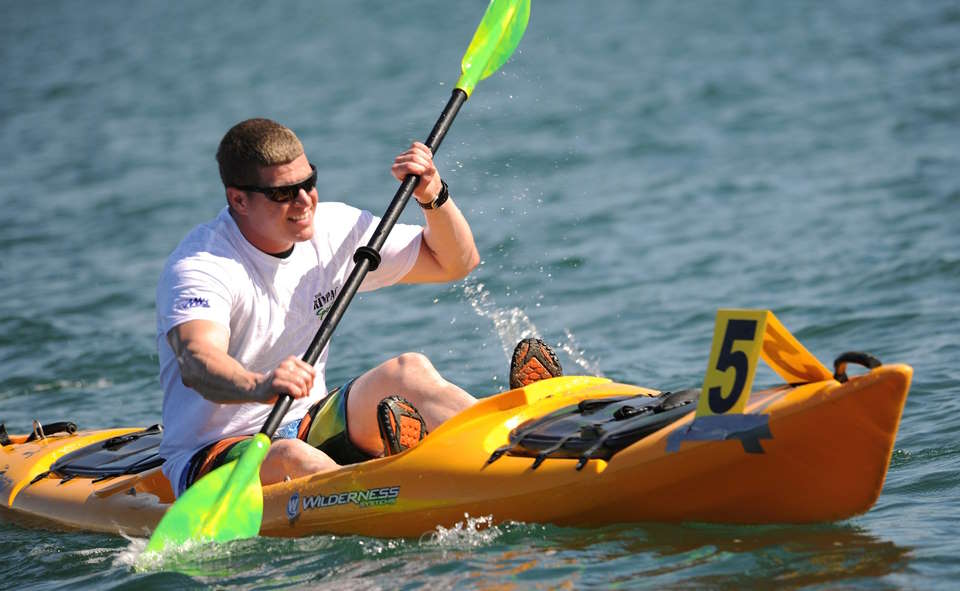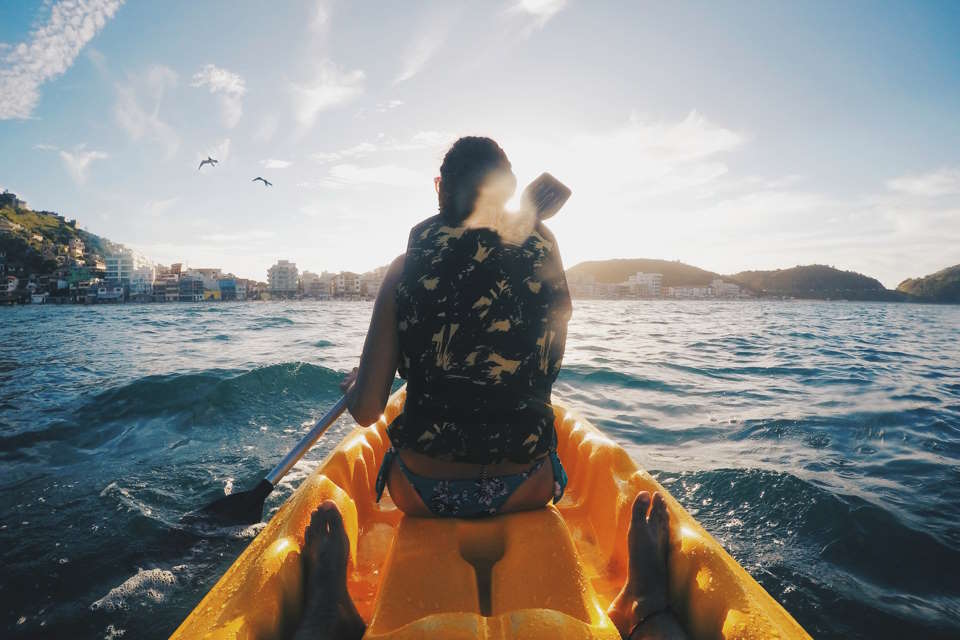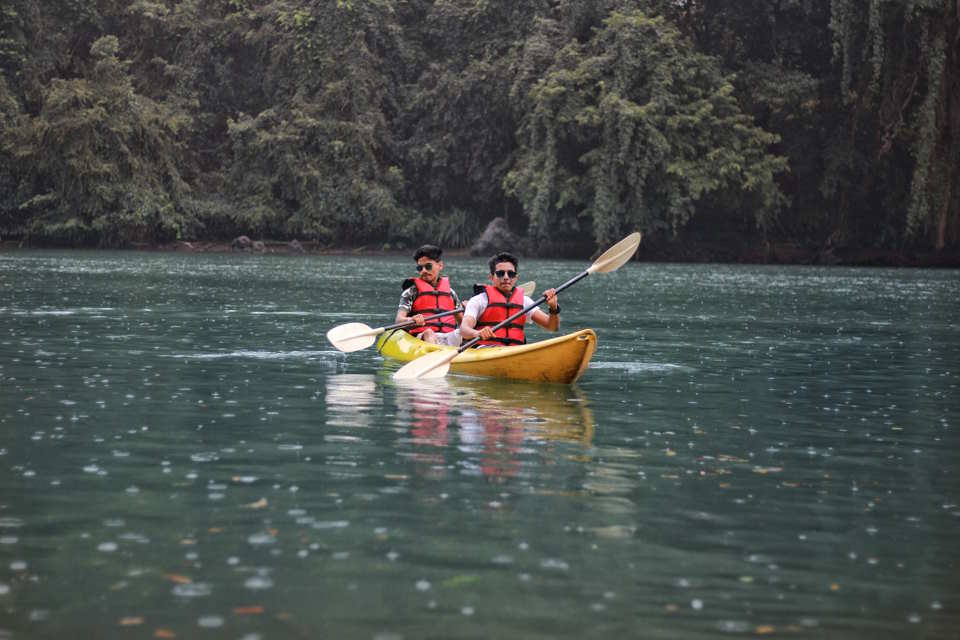Kayaking is one of the most thrilling outdoor activities that everyone should experience at least once in their lifetime. It allows you to explore beautiful waterways while getting some exercise and fresh air. However, like any adventure sport, kayaking can come with its risks. Before taking on kayaking, it’s essential to understand the potential dangers so that you can stay safe and enjoy your experience to the fullest. We’ll discuss the risks of kayaking, what happens if you flip over in a kayak, when you should not kayak, what you should not do while kayaking, whether a kayak will sink if it flips, and whether kayaking is hard for beginners. Read on to learn more!
Introduction
Kayaking is a popular outdoor activity that can be enjoyed by people of all ages and skill levels. It provides a fun and low-impact way to explore and enjoy nature, but many people wonder whether kayaking is dangerous.
While kayaking can be a safe and enjoyable activity, there are certain risks and dangers that come with it. Some of the most common risks associated with kayaking include capsizing, hypothermia, and injury. Capsizing can occur when the kayak flips over, causing the paddler to fall into the water. Hypothermia can occur when the paddler is exposed to cold water or air for an extended period of time. Injury can occur when the paddler is involved in a collision or accident.
- To minimize the risks associated with kayaking, it is important to take certain precautions. Always wear a properly fitting lifejacket or personal flotation device, and consider wearing a wetsuit or drysuit to protect against hypothermia.
- Check the weather and water conditions before heading out on the water, and avoid kayaking in high winds, thunderstorms, or other hazardous conditions.
- Stay alert and aware of your surroundings, and follow all boating and safety regulations. It is also important to be properly trained in kayaking techniques and safety procedures.
While kayaking can be a fun and rewarding activity, it is important to be aware of the risks and take proper precautions. By following these guidelines and using common sense, you can enjoy your kayaking experience while minimizing the potential dangers.
What Are the Risks of Kayaking?
Kayaking is a popular outdoor activity that offers a great way to explore scenic waterways. It is a fun and exhilarating experience that people of all ages can enjoy. However, like any adventurous activity, it comes with risks. We will look at the various risks associated with kayaking.
Falling Overboard
One of the main risks of kayaking is falling overboard. This can happen due to various reasons such as strong winds, choppy waters, or a sudden change in water conditions. When kayaking, it is essential to wear a personal flotation device at all times to prevent drowning. Moreover, it is recommended to take a kayaking course to learn proper techniques for staying safe while on the water.
Capsizing
Capsizing refers to when a kayak flips, and the paddler falls into the water. Kayaks can capsize due to various reasons such as rough waters, rocks, currents, or improper weight distribution. Capsizing can be dangerous as it can lead to hypothermia, cuts, bruises, and other injuries. Therefore, it is essential to learn proper paddling techniques and safety procedures in case of capsizing.
Exposure to the Sun
Spending a considerable amount of time on the water can expose you to the harmful rays of the sun. This can cause sunburn, dehydration, and heat exhaustion. It is, therefore, crucial to wear sunscreen, a hat, and sunglasses to protect yourself from the effects of the sun. Moreover, it is recommended to stay hydrated throughout the kayaking trip by drinking plenty of water and avoiding alcohol.
What Happens if You Flip Over in a Kayak?
If you’re new to kayaking, one of the questions you may have is what happens if you flip over in a kayak. While it can be intimidating to think about, flipping over in a kayak is actually a common occurrence for kayakers, especially beginners. Don’t let the fear of flipping over keep you from enjoying this exciting and rewarding activity. Instead, take some time to understand what happens when you do flip over and how to recover.
First, it’s important to understand that flipping over in a kayak is not necessarily dangerous. Most kayaks are designed to be self-bailing, which means they will automatically drain any water that enters the cockpit. However, flipping over can be uncomfortable and may require some effort on your part to right the kayak and get back in.
- Step 1: Stay Calm – The most important thing to do when you flip over is to stay calm and avoid panicking. Take a deep breath, assess the situation, and remain relaxed.
- Step 2: Exit the Kayak – If you are unable to right the kayak and get back in, you may need to exit the kayak and swim to shore. To do this, push away from the kayak and swim to the surface.
- Step 3: Right the Kayak – If you are able to right the kayak, you will need to do so quickly to avoid taking on too much water. To do this, grab onto the kayak and use your body weight to flip it over.
It’s important to note that kayaking in cold water can be dangerous, and flipping over can lead to hypothermia. Always wear proper protective gear when kayaking in cold water, and be sure to practice self-rescue techniques before heading out on the water.
| Do: | Don’t: |
|---|---|
| Stay calm Assess the situation Right the kayak if possible |
Panic Attempt to hold onto the kayak if it’s being swept away by current Ignore safety precautions |
When Should You Not Kayak?
Kayaking is an exciting and thrilling outdoor activity that many people enjoy. It provides a great opportunity to explore the natural beauty around you while also getting a good workout. However, kayaking can also be dangerous if proper safety precautions are not taken. Therefore, it is important to understand when it is not safe to go kayaking.
- Inexperienced – If you have never been kayaking before, it is not safe for you to kayak alone or without the guidance of an experienced kayaker. You need to learn basic techniques, such as proper paddling, turning, and stopping, before you step into a kayak on your own.
- Severe Weather – It is not safe to go kayaking during severe weather conditions, such as heavy rain, lightning, or strong winds. These conditions can cause currents and waves that are too strong for even experienced kayakers to handle.
- Physical Limitations – If you have any physical limitations that could affect your ability to maneuver a kayak or to swim, it is not safe for you to go kayaking. It is important to know your own limits and not to exceed them.
Kayaking can be an enjoyable and safe experience if you take the necessary precautions and avoid situations that could be dangerous. Always remember to wear proper safety gear, such as a life jacket, and to let someone know where you are going and when you plan to return. If you are unsure about whether it is safe to kayak in certain conditions, it is always better to err on the side of caution and avoid going out.
What Should You Not Do While Kayaking?
Kayaking is a fun outdoor activity that many people enjoy. It provides a unique way to explore bodies of water and experience nature. However, like any other physical activity, it comes with risks. It is important to understand these risks and take the necessary precautions to ensure your safety. One way to do this is by knowing what to avoid doing while kayaking.
- Don’t overload your kayak: One of the biggest mistakes people make while kayaking is overloading their kayak. Always check the weight limit of your kayak, and do not exceed it. Overloading can cause your kayak to become unstable and increase your risk of capsizing.
- Don’t kayak in bad weather conditions: Weather conditions can change quickly and can be unpredictable. Before you go kayaking, always check the weather forecast. Avoid kayaking in heavy winds, lightning storms, or if there are strong currents.
- Don’t drink or take drugs while kayaking: It is important to keep a clear head while kayaking. Drinking or taking drugs can impair your judgment and increase your risk of accidents. Always stay sober while kayaking.
It is also important to wear a life jacket and learn basic kayaking techniques before going out on the water. Always let someone know where you are going, and never go kayaking alone. By following these safety tips, you can enjoy kayaking without putting yourself in danger.
Will a Kayak Sink if It Flips?
Kayaking is a popular water sport that requires good balance and agility. Whether you are a seasoned pro or a beginner, it is important to be aware of the risks involved, especially if you are kayaking in rough waters. One of the most common concerns for first-time kayakers is whether a kayak will sink if it flips over. Here, we will explore this topic in more detail.
Firstly, it’s important to understand that kayaks are designed to be stable even when flipped over. Most modern kayaks are built with air chambers that provide buoyancy, even when filled with water. This means that even if you do flip over, your kayak will not sink to the bottom of the water.
- However, it is important to note that the chances of flipping over depend on various factors. For example, if you are kayaking in fast-moving waters or rough surf, the likelihood of flipping over is higher.
- In addition, your level of experience and the type of kayak you are using can also affect your stability. For example, wider kayaks are generally more stable than narrower ones.
- If you do happen to flip over, it’s important to stay calm and collected. Remember to hold on to your paddle and try to stay close to your kayak as it will provide some degree of buoyancy and make it easier for you to get back in.
| DOs | DON’Ts |
|---|---|
| Stay calm and collected | Panic and thrash around in the water |
| Hold on to your paddle with both hands | Let go of your paddle |
| Stay close to your kayak | Swim away from your kayak |
| Try to re-enter your kayak | Give up and wait for rescue |
Kayaking is a relatively safe sport as long as you take the necessary precautions. It’s important to wear proper safety gear such as a life jacket and to be aware of your surroundings at all times. While flipping over can be scary, it is unlikely to result in your kayak sinking to the bottom of the water. With practice and experience, you can improve your balance and reduce your chances of flipping over altogether.
Is Kayaking Hard for Beginners?
Kayaking is one of the most exhilarating outdoor activities that combines exercise and recreation. It is a rewarding activity that enables you to experience the beauty of nature while getting your heart pumping. People of all ages enjoy this sport, but the question that comes to mind for many is, “Is kayaking hard for beginners?”
The answer to that question largely depends on your level of fitness and your ability to balance on water. Kayaking requires the use of several muscles, including your back, core, arms, and shoulders. Therefore, if you are not used to exercising or have limited mobility, you may find kayaking to be physically challenging.
- However, beginner-friendly kayaks are available that are designed to be stable and easy to maneuver. These kayaks are wider than traditional kayaks and have a flatter bottom, allowing for more stability on the water.
- Another factor to consider is the type of water you plan to kayak on. Large bodies of water, such as lakes or the ocean, can be more challenging because of waves and wind. Rivers, on the other hand, can be easier to navigate for beginners as they usually have calmer waters, and the current can help you move along.
It’s always important to take safety precautions when kayaking, regardless of your experience level. Wear a life jacket, know the paddling and safety techniques, and always check the weather before you hit the water. With proper preparation and equipment, kayaking can be a fun and rewarding activity for beginners and experienced kayakers alike.












